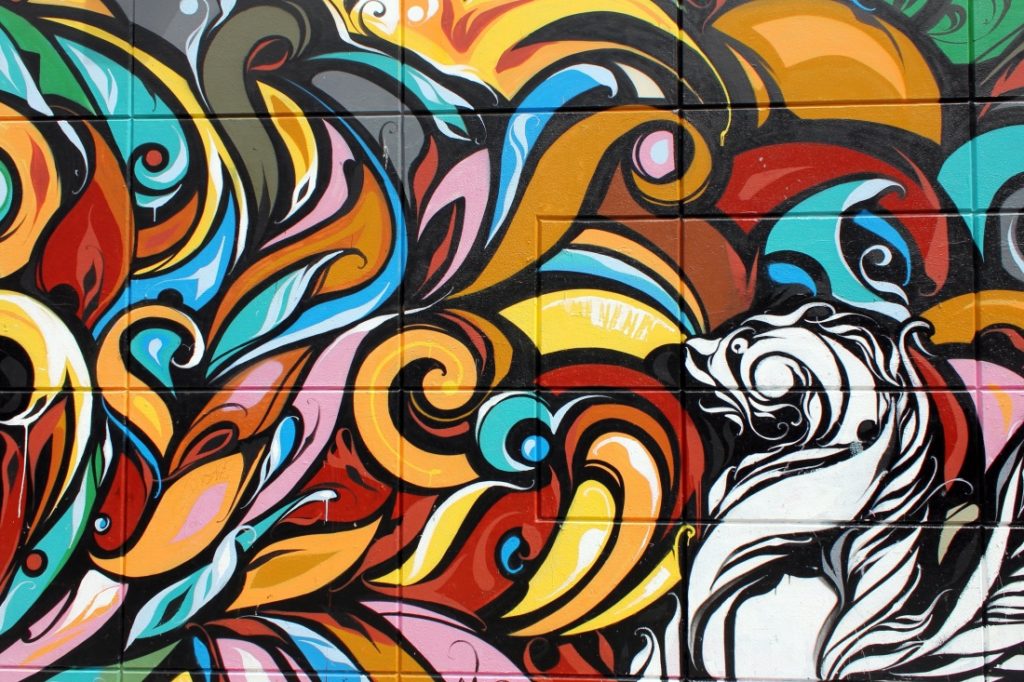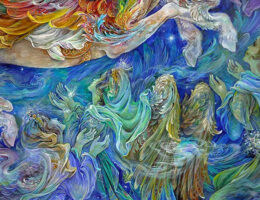IRAN ART EXHIBITION: VISUAL ARTS WAKE UP YOUR IMAGINATION AND CREATIVITY!
The visual arts are those creations that we can see rather than something like the auditory arts, which we hear. These art forms are extremely diverse, from the artwork that hangs on your wall to the movie you watched last night.
What Types of Art Are Visual Arts?
The visual arts include mediums such as drawing, painting, sculpture, architecture, photography, film, and printmaking. Many of these pieces of art are created to stimulate us through a visual experience. When we look at them, they often provoke a feeling of some sort.
Within the visual arts is a category known as the decorative arts, or craft. This is art that is more utilitarian and has a function but retains an artistic style and still requires talent to create. The decorative arts include ceramics, furniture making, textiles, interior design, jewelry making, metal crafting, and woodworking.
What Are ‘The Arts’?
The arts, as a term, has an interesting history. During the Middle Ages, the arts were scholarly, limited to seven categories, and did not involve creating anything for people to look at. They were grammar, rhetoric, dialectic logic, arithmetic, geometry, astronomy, and music.
To further confuse matters, these seven arts were known as the fine arts, in order to distinguish them from the useful arts because only “fine” people—those who did not do manual labor—studied them. Presumably, the useful arts people were too busy being useful to require an education.
At some point in the ensuing centuries, people realized there was a difference between a science and an art. The phrase fine arts came to mean anything that had been created to please the senses. After losing the sciences, the list then included music, dance, opera, and literature, as well as what we think of as the visual arts: painting, sculpture, architecture, and the decorative arts.
That list of fine arts got a little long for some. During the 20th century, the fine arts were split up into further categories.
• Literature
• Visual arts (e.g., painting, sculpture)
• Auditory arts (e.g., music, radio drama)
• Performance arts (can combine the other categories of arts, but they are performed live, such as theater and dance. Note the plural to distinguish it from performance art, which is performed art that is not theater.)
Visual arts can also be subdivided into graphic arts (those done on a flat surface) and plastic arts (e.g., sculpture).
What Makes Art ‘Fine’?
Within the world of the visual arts, people still make distinctions between “fine” art and everything else. It really does get confusing, and it can change, depending on who you’re speaking with.
IRAN ART EXHIBITION: For instance, painting and sculpture are almost automatically classified as fine arts. The decorative arts, which are at times exhibit a finer nature and craftsmanship than some fine arts, are not called “fine.”
Additionally, visual artists sometimes refer to themselves (or are referred to by others) as fine artists, as opposed to commercial artists. However, some commercial art is really wonderful—even “fine,” some would say.
Because an artist needs to sell art in order to remain a working artist, a strong argument could be made that most art is commercial. Instead, the category of commercial art is typically reserved for art created to sell something else, such as for an advertisement.
This is exactly the kind of wording that puts many people off of art.
It would really simplify matters if we could all just stick with visual, auditory, performance, or literary when we speak of the arts and eliminate fine altogether, but that’s now how the art world sees it.

Visual arts are forms of art that focus on creating pieces of work that mainly make use of the visual environment, while trying to convey messages of emotion, ideas or information. Visual arts covers three main sub-fields: fine art (painting, drawing, graphics, sculpture, architecture), decorative art (tapestry, ceramics, mosaic art, glass art, jewellery art) and contemporary art (artistic photography, art print, video art, animation, graffiti art). This discipline relates to similar areas such as art and art history, graphic design and cultural studies.
Students of visual arts usually have the chance to learn about visual expression culture, post-modernism, animation, art history, film, graphic design, photography, print media, and more.
IRAN ART EXHIBITION: Graduates will gain general competencies to explore the artistic message expressed in visual language, as well as conduct functional or aesthetic creations using various basic materials and techniques. They will gain knowledge of design techniques, master the use of colour and understand theories of composition.
Career opportunities for visual arts graduates include: desktop publisher, photographer, make-up artist, drafter, craft artist, exhibition designer, glass blower, graphic designer, illustrator.
What is visual art?
The visual arts are art forms that create works that are primarily visual in nature. These definitions should not be taken too strictly as many artistic disciplines (performing arts, conceptual art, textile arts) involve aspects of the visual arts as well as arts of other types. Also included within the visual arts are the applied arts such as industrial design, graphic design, fashion design, interior design and decorative art.
The current usage of the term “visual arts” includes fine art as well as the applied, decorative arts and crafts, but this was not always the case. Before the Arts and Crafts Movement in Britain and elsewhere at the turn of the 20th century, the term ‘artist’ was often restricted to a person working in the fine arts (such as painting, sculpture, or printmaking) and not the handicraft, craft, or applied art media. The distinction was emphasized by artists of the Arts and Crafts Movement who valued vernacular art forms as much as high forms. Art schools made a distinction between the fine arts and the crafts maintaining that a craftsperson could not be considered a practitioner of art.
What is Public Art?
IRAN ART EXHIBITION: Public art is exactly that, art in public spaces. The term “public art” may conjure images of historic bronze statues of a soldier on horseback in a park. Today, public art can take a wide range of forms, sizes, and scales—and can be temporary or permanent. Public art can include murals, sculpture, memorials, integrated architectural or landscape architectural work, community art, digital new media, and even performances and festivals!






